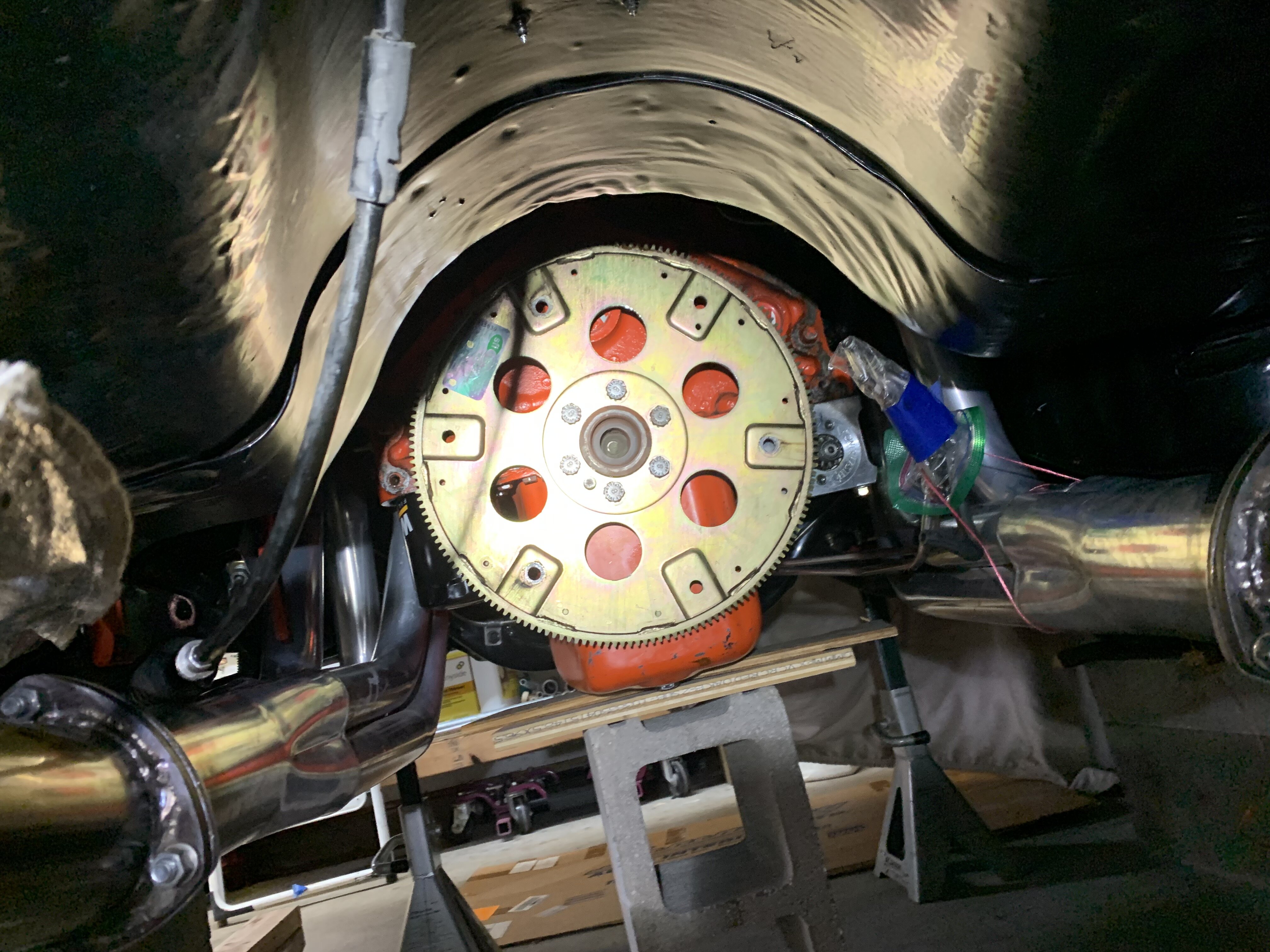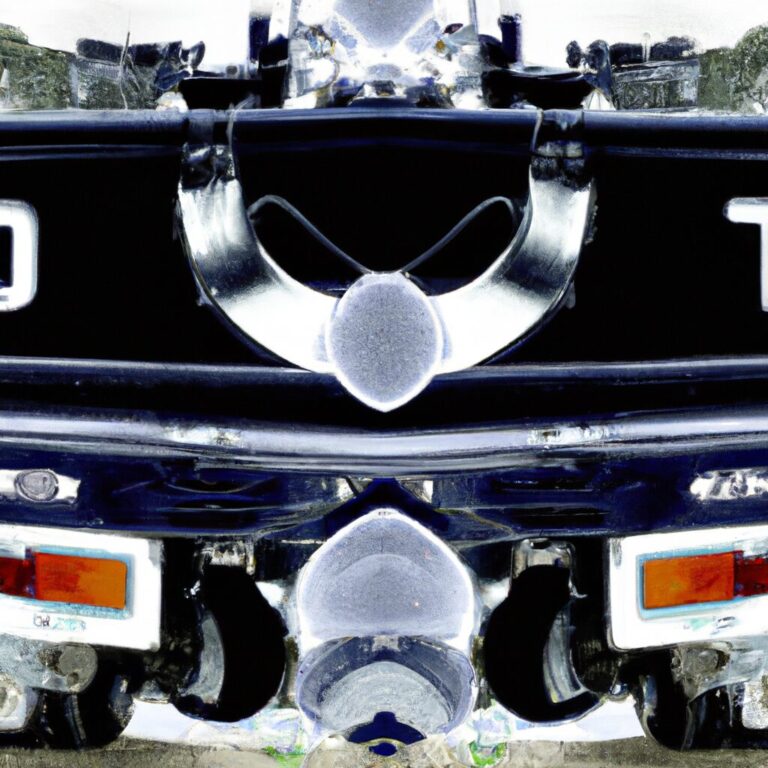Flex Plate Installed Backwards
If the flex plate is installed backwards, it can cause serious engine damage and transmission issues. Misaligned teeth may result in poor engine performance and loud noises.
The flex plate plays a crucial role in the engine’s operation, linking the crankshaft to the torque converter. It’s essential for smooth engine function and powering the transmission system. We will explore the implications of a flex plate installed backwards, how it can be detected, and steps to correct this potentially damaging error.
Understanding the importance of proper flex plate installation can help prevent costly repairs and ensure optimal vehicle performance.
What Is A Flex Plate?
A flex plate is a vital component of an automatic transmission, connecting the engine to the torque converter. Let’s delve into its definition and purpose.
Definition
A flex plate, also known as a flexplate, is a metal disk that connects the crankshaft of the engine to the torque converter in an automatic transmission system. It is usually made of steel and is attached to the crankshaft via a series of bolts.
Purpose
The primary purpose of the flex plate is to provide a smooth connection between the engine and the torque converter. It transfers the rotational energy generated by the engine to the torque converter, allowing the transmission to convert that energy into forward motion of the vehicle.

Credit: www.reddit.com
Symptoms Of A Flex Plate Installed Backwards
When a flex plate is installed incorrectly on a vehicle, it can lead to various noticeable symptoms that indicate a problem. It is crucial to identify these signs to address the issue promptly and prevent further damage to the engine.
Engine Vibrations
Misaligned flex plate can cause severe engine vibrations that can be felt throughout the vehicle. These vibrations can become more pronounced as the vehicle accelerates, indicating potential issues with the flex plate installation.
Trouble Starting The Engine
Incorrectly installed flex plate may result in difficulty starting the engine. The engine may crank without firing up or exhibit sluggish starting performance, indicating a possible reversal of the flex plate.
Causes Of A Flex Plate Installed Backwards
When a flex plate is installed backwards, issues can arise causing mechanical problems and potential damage to the vehicle. Understanding the causes behind this error can help prevent such issues from occurring.
Installation Error
Improper alignment during installation can lead to a flex plate being installed backwards.
Incorrect Torqueing
If the flex plate bolts are not torqued to the manufacturer’s specifications, it may result in the flex plate being installed incorrectly.
Effects Of A Flex Plate Installed Backwards
A flex plate is a critical component in an automatic transmission system, responsible for connecting the engine to the torque converter. Installing a flex plate backwards can lead to several detrimental effects on the transmission and the flex plate itself.
Damaged Transmission
An improperly installed flex plate can cause severe damage to the transmission. The misalignment and stress on the transmission components can lead to gear slippage, overheating, and ultimately transmission failure. This could result in costly repairs or even the need for a complete transmission replacement.
Damage To The Flex Plate
When a flex plate is installed backward, it can cause excessive wear and tear on the plate as it interferes with the torque converter. This misalignment can lead to cracks, warping, or even complete failure of the flex plate. This not only affects the transmission’s performance but also poses a safety risk for the vehicle.
How To Fix A Flex Plate Installed Backwards?
Installing a flex plate backwards in a vehicle can lead to a host of problems, including vibrations, harsh shifting, and ultimately, transmission damage. If you suspect that your flex plate has been installed incorrectly, it is crucial to take immediate action. In this article, we will discuss how to fix a flex plate installed backwards, ensuring smooth operation and optimal performance for your vehicle.
Professional Inspection
The first step in fixing a flex plate installed backwards is to have a professional inspection. While it may be tempting to attempt the repair yourself, it is best to leave it to the experts who have the necessary knowledge and experience. A qualified mechanic will thoroughly assess the situation, properly diagnose the issue, and recommend the best course of action.
During the inspection, the mechanic will examine the flex plate, transmission, and related components to determine the extent of the damage. They will also assess if any other parts have been affected by the incorrect installation. Trusting a professional to handle the inspection ensures that no further harm is done to your vehicle.
Reinstallation
Once the inspection is complete, the next step is to reinstall the flex plate correctly. This process involves removing the transmission from the vehicle to access the flex plate. Experienced mechanics will carefully handle this delicate procedure to prevent any additional damage.
When reinstalling the flex plate, precise alignment is crucial. The flex plate should align perfectly with the crankshaft and torque converter to ensure smooth rotation and proper connection between the engine and the transmission. Additionally, it is essential to use the correct torque specification when tightening the bolts to prevent any future issues.
Keep in mind that fixing a flex plate installed backwards requires specialized tools and expertise. It is not a task recommended for inexperienced individuals. By entrusting this repair to a professional, you can have peace of mind that the flex plate will be reinstalled correctly, minimizing the risk of further complications.
Remember, the sooner you address the issue of a flex plate installed backwards, the better. Delaying the repair can lead to more severe transmission problems and potentially higher costs down the line. So, if you suspect that your flex plate has been installed incorrectly, don’t hesitate to seek professional help.

Credit: www.firstgenmc.com
Credit: 67-72chevytrucks.com
Frequently Asked Questions On Flex Plate Installed Backwards
What Happens If You Install A Flywheel Backwards?
Installing a flywheel backwards can cause serious damage to the engine. The engine may not start or run properly, and there could be issues with the clutch, transmission, and overall performance. It is important to correctly install the flywheel to ensure optimal functioning of the engine.
Is It Possible To Put A Flexplate On Backwards?
Yes, it is possible to put a flexplate on backwards, but it can cause serious engine damage. The teeth won’t align with the starter, leading to starting issues and potential harm to the transmission. Always ensure the flexplate is installed correctly to avoid these problems.
How Do You Rotate A Flex Plate?
To rotate a flex plate, use a socket wrench on the bolts in a crisscross pattern. Tighten them progressively to ensure even rotation.
How Does A Flex Plate Get Cracked?
A flex plate can get cracked due to excessive stress, engine misalignment, or impact damage. Age and wear can also contribute.
Can A Flex Plate Be Installed Backwards?
Yes, a flex plate can be installed backwards, but it can lead to serious engine problems if not corrected.
What Happens When A Flex Plate Is Installed Backwards?
When a flex plate is installed backwards, it can cause misalignment between the torque converter and engine crankshaft, resulting in vibration and potential damage to the transmission.
How Do I Know If My Flex Plate Is Installed Backwards?
You can check if the flex plate is installed backwards by inspecting the orientation of the torque converter mounting holes and comparing it to the engine crankshaft.
Conclusion
Installing a flex plate backwards can lead to serious engine damage. Always double-check the installation to avoid unnecessary complications. Remember to consult the manufacturer’s instructions for precise guidance. In the event of any uncertainty, seek professional assistance to ensure a smooth installation process for optimal engine performance.

